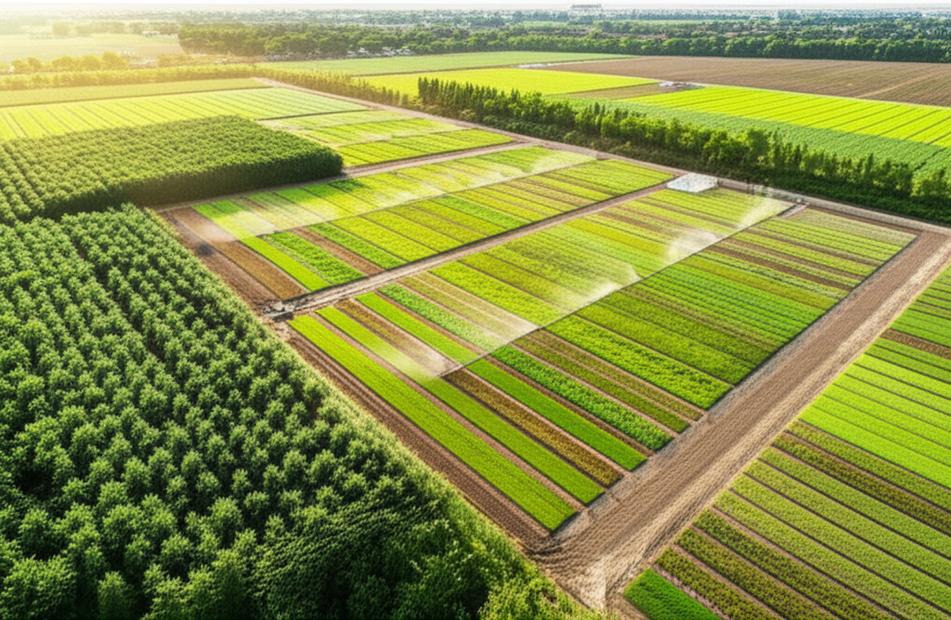Sustainable Agriculture Technology: Innovations for a Greener Future

Sustainable Agriculture Technology: Feeding the Future Responsibly
Nội dung
- 1 Sustainable Agriculture Technology: Feeding the Future Responsibly
Sustainable agriculture technology is transforming the way we produce food, minimizing environmental impact while maximizing efficiency and yield. It encompasses a wide array of innovations designed to address the challenges of climate change, resource depletion, and growing populations.
What is Sustainable Agriculture Technology?
Sustainable agriculture technology refers to the use of advanced tools, techniques, and systems that promote environmentally friendly and economically viable farming practices. It aims to reduce the negative impacts of traditional agriculture, such as soil degradation, water pollution, and greenhouse gas emissions, while ensuring food security for future generations.
- Who benefits from sustainable agriculture technology? Farmers, consumers, the environment, and future generations all benefit.
- What are the key technologies involved? Precision agriculture, vertical farming, agroforestry, and conservation tillage are just a few examples.
- Where is it being implemented? Sustainable agriculture technologies are being adopted globally, from small family farms to large-scale commercial operations.
- When did it become a focus? The focus on sustainable agriculture has grown significantly in recent decades due to increasing awareness of environmental issues.
- Why is it important? It is crucial for ensuring food security, protecting the environment, and promoting economic stability in rural communities.
- How does it work? By optimizing resource use, reducing waste, and minimizing negative environmental impacts.
Key Technologies in Sustainable Agriculture
Here are some of the most promising sustainable agriculture technologies:
1. Precision Agriculture
Precision agriculture uses data-driven insights to optimize crop management practices. By leveraging sensors, GPS technology, and data analytics, farmers can make informed decisions about irrigation, fertilization, and pest control.
- Benefits: Reduced input costs, increased yields, minimized environmental impact.
- Examples: Variable rate applicators, drone-based crop monitoring, soil sensors.
For example, John Deere’s precision agriculture solutions help farmers optimize their operations by providing real-time data on crop health and soil conditions. See more at John Deere Precision Ag.
2. Vertical Farming
Vertical farming involves growing crops in vertically stacked layers, often indoors, using controlled environment agriculture (CEA) techniques.
- Benefits: Higher yields per square foot, reduced water consumption, year-round production.
- Examples: Indoor farms using hydroponics, aeroponics, and aquaponics.
Companies like Plenty are pioneering vertical farming, utilizing advanced LED lighting and climate control systems to maximize crop production in urban environments. Learn more at Plenty.
3. Conservation Tillage
Conservation tillage practices minimize soil disturbance, reducing erosion, improving soil health, and conserving water.
- Benefits: Reduced soil erosion, improved water infiltration, enhanced soil fertility.
- Examples: No-till farming, reduced tillage, strip-till farming.
The USDA’s Natural Resources Conservation Service (NRCS) promotes conservation tillage as a key strategy for improving soil health and reducing environmental impacts. Explore their resources at USDA NRCS.
4. Agroforestry
Agroforestry integrates trees and shrubs into agricultural systems, providing multiple benefits such as improved soil health, carbon sequestration, and habitat for wildlife.
- Benefits: Enhanced biodiversity, carbon sequestration, improved soil fertility.
- Examples: Alley cropping, silvopasture, forest farming.
The World Agroforestry Centre (ICRAF) conducts research and promotes agroforestry practices worldwide. Find out more at World Agroforestry.
5. Water Management Technologies
Efficient water management is crucial for sustainable agriculture. Technologies such as drip irrigation, rainwater harvesting, and water recycling help conserve water and reduce water pollution.
- Benefits: Reduced water consumption, improved water quality, increased crop yields.
- Examples: Drip irrigation systems, rainwater harvesting systems, water sensors.
Organizations like the Irrigation Association are dedicated to advancing irrigation technologies and promoting efficient water management practices. See their resources at Irrigation Association.
6. Biopesticides and Biocontrol
Biopesticides are naturally derived substances used for pest control. Biocontrol involves using beneficial organisms to suppress pests and diseases.
- Benefits: Reduced reliance on synthetic pesticides, minimized environmental impact, improved food safety.
- Examples: Bacillus thuringiensis (Bt), ladybugs, parasitic wasps.
The EPA provides information on biopesticides and their role in sustainable agriculture. Learn more at EPA Biopesticides.
7. Soil Health Management
Healthy soils are the foundation of sustainable agriculture. Practices such as cover cropping, composting, and soil testing help improve soil health and fertility.
- Benefits: Improved soil structure, increased water-holding capacity, enhanced nutrient availability.
- Examples: Cover crops, compost, soil amendments.
The Soil Health Institute promotes soil health research and education. Explore their resources at Soil Health Institute.
The Role of Technology in Sustainable Agriculture
Technology plays a critical role in advancing sustainable agriculture by providing farmers with the tools and information they need to make informed decisions, optimize resource use, and minimize environmental impacts. From precision agriculture to vertical farming, these technologies are helping to create a more sustainable and resilient food system.
Challenges and Opportunities
While sustainable agriculture technology offers numerous benefits, there are also challenges to its adoption. These include the high initial cost of some technologies, the need for specialized training, and the lack of access to information and resources.
However, the opportunities for sustainable agriculture technology are vast. As technology continues to advance and become more accessible, it has the potential to transform agriculture and create a more sustainable and equitable food system.
Ebiz and Sustainable Practices
While Ebiz primarily focuses on retail and point-of-sale solutions, its efficient inventory management and sales tracking features can indirectly contribute to sustainable practices by reducing waste and optimizing resource allocation for businesses involved in the sustainable agriculture sector.
Conclusion
Sustainable agriculture technology is essential for ensuring food security, protecting the environment, and promoting economic stability in rural communities. By embracing these innovations, we can create a more sustainable and resilient food system for future generations.
Visit our store to explore tools and resources that can help your business adopt more sustainable practices: https://www.phanmempos.com/cua-hang

